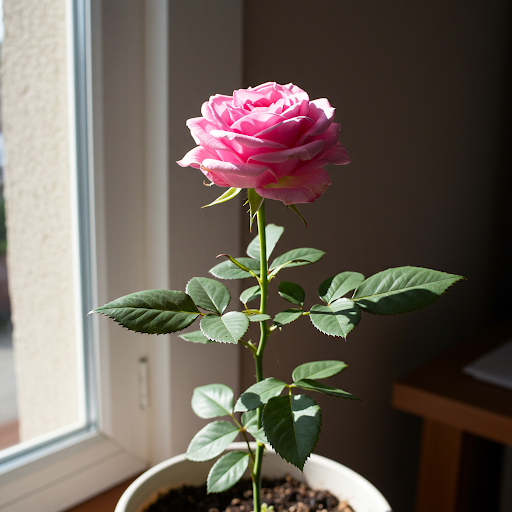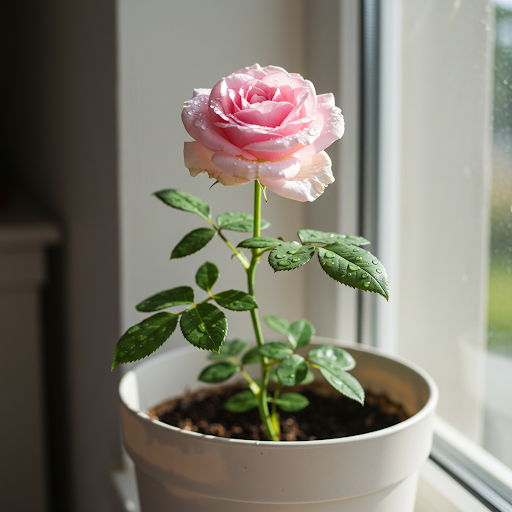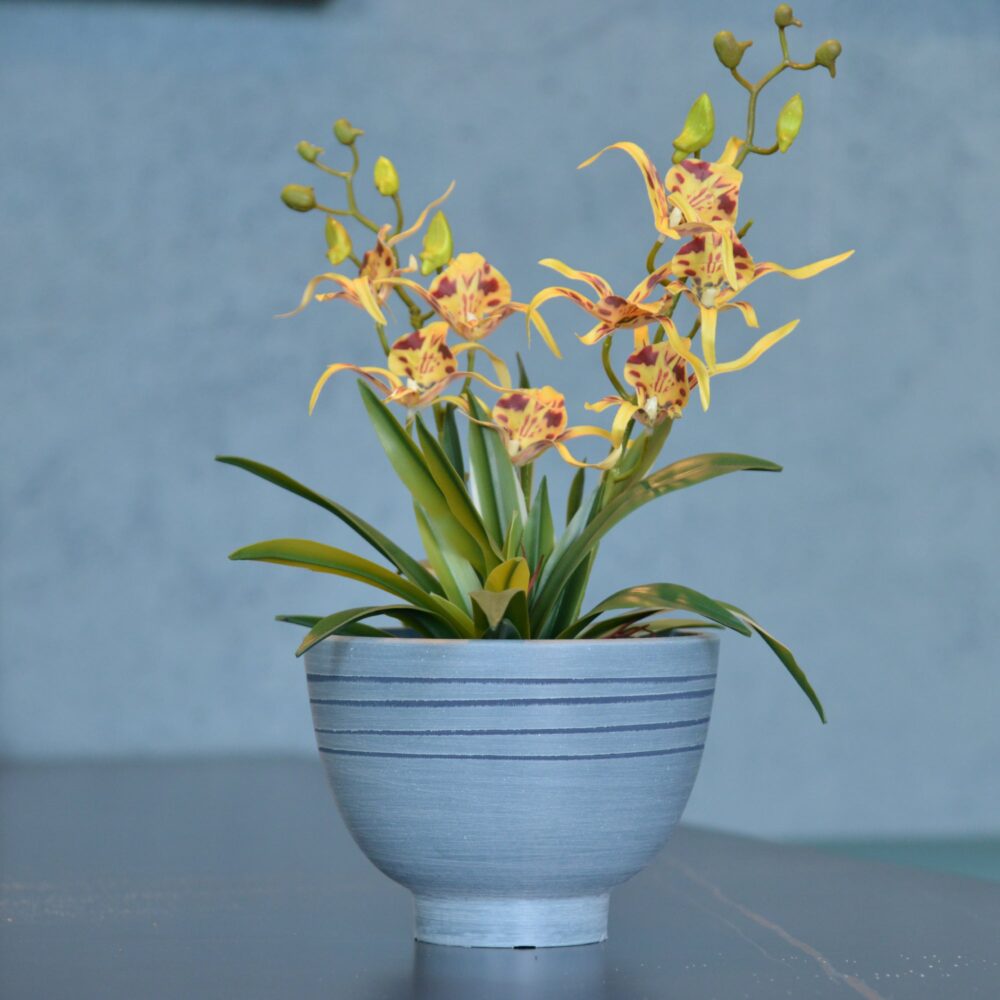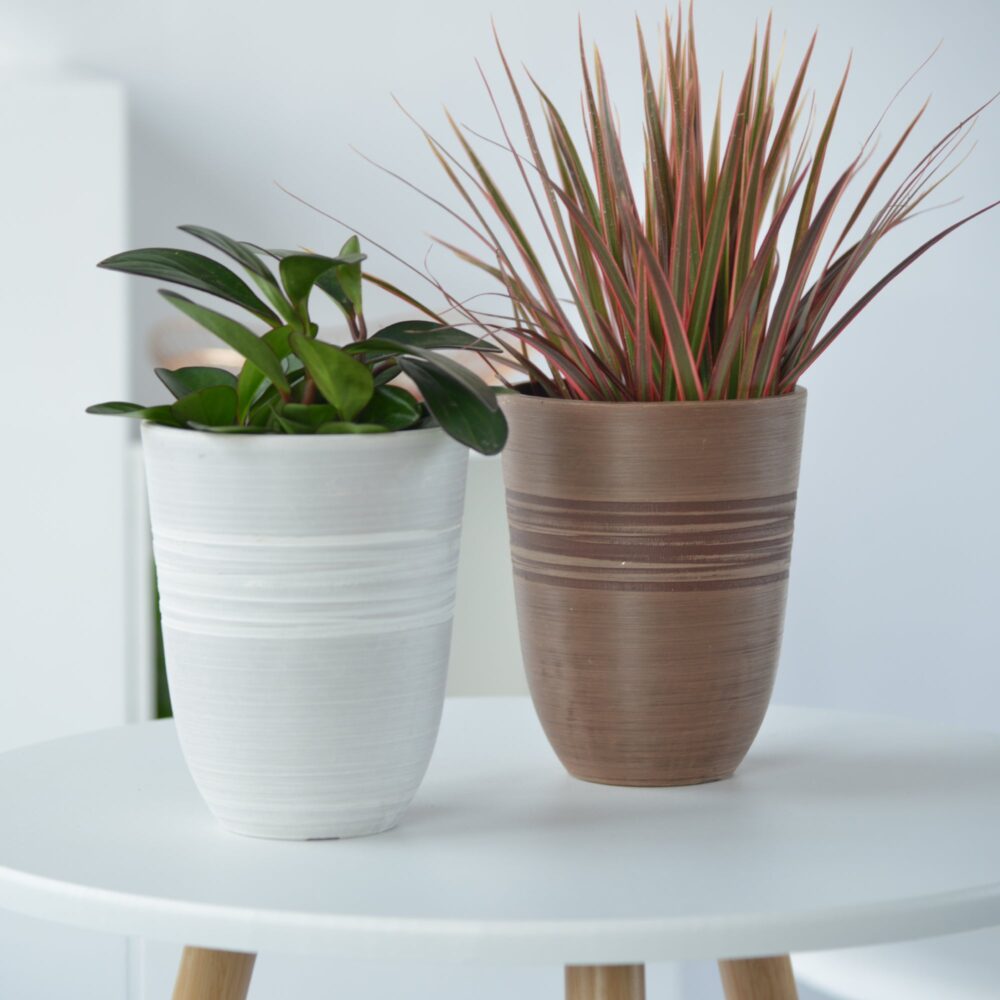Roses Indoors: The Ultimate Guide to Growing Beautiful Roses Inside Your Home
Dreaming of fragrant, romantic roses blooming indoors? While roses are traditionally outdoor garden favorites, it is possible to cultivate Rose flowers inside your home with the right approach. These iconic and beloved flowering shrubs, belonging to the genus Rosa and cherished for their diverse colors, exquisite forms, and captivating scents, can bring beauty and fragrance to your indoor living space. This comprehensive guide will explore the art of growing roses indoors, covering everything from variety selection to pot choices and essential care tips for indoor success.

Rose flowers
Can Roses Thrive Indoors?
Yes, Roses can be grown indoors, but it’s important to recognize that indoor rose cultivation presents unique challenges compared to outdoor gardening. Roses are sun-loving plants and require specific conditions to flourish and bloom indoors. Success largely depends on choosing the right rose varieties, providing adequate light, and maintaining a suitable environment. While indoor roses may not always reach the size or bloom as profusely as outdoor roses, you can still enjoy their beauty and fragrance with careful attention to their needs.
Ideal Indoor Growing Conditions (and How to Mimic the Outdoors):
- Light: Roses are sun-worshippers and demand at least 6-8 hours of direct sunlight per day to bloom well. This is the most critical factor for indoor rose growing. South-facing windows are essential. Supplemental grow lightsare often necessary, especially during winter or in rooms with less than ideal natural light. Insufficient light is the primary reason for bloom failure in indoor roses.
- Rose Varieties for Indoors: Miniature roses, micro-mini roses, and Polyantha roses are the most suitable types for indoor growing due to their smaller size and more compact growth habit. These varieties are bred to be more adaptable to container growing and indoor conditions. Avoid trying to grow large, hybrid tea roses indoors, as they are generally not well-suited for indoor environments.
- Soil: Roses need well-draining, fertile soil. Use a high-quality rose potting mix or a general-purpose potting mix amended with compost, perlite, and vermiculite to ensure excellent drainage and nutrient availability.
- Watering: Roses need consistent moisture, especially during their blooming season. Water deeply when the top inch of soil feels dry to the touch. Ensure the pot has good drainage to prevent soggy soil and root rot. Indoor roses in pots may dry out more quickly than outdoor roses, especially in heated environments, so check soil moisture regularly. Reduce watering slightly in winter when growth slows.
- Temperature: Roses benefit from cooler temperatures, especially during their dormant period. During the growing season, aim for daytime temperatures between 60°F to 75°F (15°C to 24°C) and slightly cooler nighttime temperatures. A cool or cold dormancy period is beneficial for many rose varieties to encourage blooming. You can provide this by moving potted roses to a cooler location (like an unheated garage or basement) for a period during winter, if possible, though not always strictly necessary for all miniature varieties indoors.
- Humidity: Roses prefer moderate humidity. Average indoor humidity is usually acceptable, but you can increase humidity slightly by misting the foliage regularly (especially in dry indoor air), using a humidifier, or placing pots on pebble trays filled with water. Good air circulation is also important to prevent fungal diseases like powdery mildew, which can be more prevalent in humid indoor conditions.
Planting Roses Indoors:
- Starting from Potted Roses: The easiest way to start growing roses indoors is to purchase potted miniature rosesfrom nurseries, garden centers, or online retailers. Choose healthy-looking plants with buds or blooms.
- Repotting: When you bring a new potted rose home, it may be necessary to repot it into a more suitable container with fresh potting mix, especially if it appears root-bound or is in a small, flimsy pot. Repot in spring or early summer.
Choosing the Right Pots for Indoor Roses:
- Suitable Pot Types: Select pots with good drainage and adequate size. Terracotta pots are often recommended as their porous nature helps with drainage and aeration, reducing the risk of overwatering. Ceramic or plastic potscan also be used, but ensure they have drainage holes.
- Drainage: Drainage is paramount for roses in pots. Ensure your chosen pot has multiple drainage holes at the bottom to allow excess water to escape freely. You can also add a layer of gravel or pot shards at the bottom of the pot to further improve drainage.
- Pot Size: Choose a pot that is appropriately sized for the rose variety. For miniature roses, start with a pot that is at least 6-8 inches in diameter and depth. As the rose grows, you may need to repot it into a slightly larger container (8-12 inches) over time. Larger pots are generally better as they provide more root space and help retain moisture.
- Potting Mix: Use a high-quality rose potting mix or create your own well-draining mix as described earlier.
Essential Care Tips for Indoor Roses to Bloom:
- Light, Light, Light: Maximize sunlight exposure. Place roses in the sunniest south-facing window. Use grow lights to supplement natural light, especially during winter. Position grow lights a few inches above the foliage and provide 12-16 hours of light per day.
- Watering Technique: Water deeply and thoroughly when the top inch of soil is dry. Allow excess water to drain completely. Avoid letting the pot sit in standing water. Water in the morning to allow foliage to dry before evening, reducing the risk of fungal diseases.
- Fertilizing: Roses are heavy feeders and need regular fertilization, especially when grown in pots. Fertilize every 2-4 weeks during the growing season (spring and summer) with a balanced liquid rose fertilizer or a fertilizer specifically formulated for blooming plants. Follow package instructions for dilution and application. Reduce or stop fertilizing during the fall and winter dormant period.
- Pruning: Prune indoor roses to maintain their shape, encourage blooming, and remove dead or diseased canes. Deadhead spent blooms promptly to encourage repeat flowering. Prune more heavily in late winter or early spring to shape the plant and remove any weak or crossing canes.
- Air Circulation: Ensure good air circulation around your indoor roses to help prevent fungal diseases. Open windows occasionally (when weather permits) or use a small fan to gently circulate air.
- Pest and Disease Control: Monitor indoor roses regularly for pests like aphids, spider mites, and fungal diseases like powdery mildew and black spot, which can be more common indoors due to humidity and less air circulation. Treat any infestations or diseases promptly with insecticidal soap, neem oil, or appropriate fungicides, following product instructions carefully and prioritizing organic options when possible.
- Dormancy (Optional but Beneficial): While not always essential for indoor miniature roses, providing a cool dormancy period can be beneficial for encouraging more robust blooming in the following season. In late fall or early winter, you can reduce watering and move potted roses to a cooler location (40-50°F or 4-10°C) for a period of 6-8 weeks. Reduce light during this period. After the cold period, gradually return them to warmer temperatures and brighter light to break dormancy.

Rose flowers
Popular Miniature Rose Varieties for Indoor Growing:
- ‘Petite Knock Out’: Very disease-resistant and floriferous miniature rose.
- ‘The Fairy’: Clusters of small pink flowers, very reliable bloomer.
- ‘Jeanne Lajoie’: Miniature climbing rose, can be trained on a small trellis indoors.
- ‘Cupcake’: Charming, fragrant miniature rose with cupped blooms.
- ‘Sweet Dream’: Miniature rose with apricot-orange blooms and a sweet fragrance.
In Summary:
Growing roses indoors is a rewarding challenge that allows you to enjoy the timeless beauty and fragrance of roses year-round. While it requires dedication and attention to their specific needs, especially regarding light, choosing the right miniature varieties and providing optimal care can lead to beautiful blooms and a touch of romance in your indoor garden. By providing ample sunlight (and supplemental grow lights), well-draining soil, consistent moisture, good air circulation, and regular fertilization, you can cultivate lovely roses within the comfort of your home.
For more detailed botanical information and to explore the vast world of rose varieties, you can visit the Wikipedia page on Rosa.
Important Note: Rose thorns can be sharp, so handle indoor rose plants with care, especially when pruning. Roses are generally considered non-toxic to humans and pets, but it’s always best to prevent ingestion of any plant material.
8 inch/10 inch Planter Indoor Plants, 2 Pack Modern Decorative Plant Pots with Drainage Hole, Cute Bowl Shape Flower Pots
By greenship-seo|2025-04-10T08:03:42+00:00January 9, 2025|Categories: Hand-carving Series|Tags: Decorative Flower Pots, Self-Watering Pots|
20T
By greenship|2024-08-13T06:42:22+00:00August 13, 2024|Categories: Hand-carving Series|
Plant Pots 6 inch 8 inch 10 inch for Indoor Plants, Set of 3 Modern Decorative Planter ts with Drainage Hole, Decorative Flower Pots
By greenship-seo|2025-04-10T06:39:28+00:00January 14, 2025|Categories: Hand-carving Series|Tags: Decorative Flower Pots|
11TH
By greenship|2024-08-13T02:50:25+00:00August 13, 2024|Categories: Hand-carving Series|
Modern Plant Pots丨Planter for Indoor Plants,8 inch or 10 inch Plant Pots with Drainage Hole,Decorative Flower Pots
By greenship-seo|2025-04-10T08:32:55+00:00January 7, 2025|Categories: Hand-carving Series|Tags: Decorative Flower Pots, Self-Watering Pots|
HS
By greenship|2024-08-13T06:45:17+00:00August 13, 2024|Categories: Hand-carving Series|






